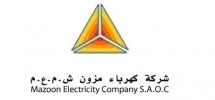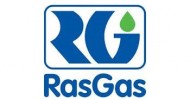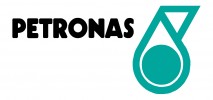
High Voltage Operational Safety for Engineers & Technicians (OSHA, NFPA & EN Standards)
Course Introduction:
Electrical safety plays an important role in electrical power systems in maintaining the safety to human being and equipment. Also it will maintain the continuity of power supply and power quality to the industrial and commercial consumers. A properly plan, design and operation of the electrical power system should ensure the safety and reliability of the system. Understanding the steps and procedures employed in a good electrical safety program requires an understanding of the nature of electrical hazards. Understanding the nature of the hazards is useless unless protective strategies are developed to protect the worker. This course includes a synopsis of the types of protective strategies that should be used to protect the worker. This course covers all aspects of safety issues of Electrical power system including regulatory and environmental requirements, general design considerations, application of switching and power equipment, and safe grounding design.
Course Objectives:
To present the recommended practices, and guides, of which NFPA 70E contained, which are developed through a consensus standards development process approved by the American National Standards Institute.
- To provide The Safety Standards.
- To provide a practical understanding of electrical power system safety.
- To declare the regulatory and legal safety requirements.
- To demonstrate the earthing systems Safety and Risk Assessment.
- To explain the relation between maintenance activities for various equipment and safety.
- To select and maintain the electrical equipment in hazardous areas and its standard.
- To indicate arc flash hazard and mitigation.
- To introduce main recommendations for electrical safety.
- To review of general work and plant safety rules.
Who Should Attend?
Electrical power generation systems and distribution engineers and technicians in utilities and industrial plants, managers of private electricity producers and large power consumers, substation engineers, consulting engineers, manufacturers of power equipment and technologists and other technical personnel involved in the design, operation and maintenance of high/medium/low voltage power systems.
Course Outline:
Day 1
Hazards of Electricity
· Hazard Analysis
· Shock
· Arc definition, description and characteristics
· Arc Burns
· Blast
· Affected Body Parts (Skin, The Nervous System, Muscular System Heart , The Pulmonary System )
· Causes Injury and Death
· Shock Effect
· Arc Flash Effect
· Protective Strategies
Earthing Systems Safety And Risk Assessment
· Equipment Earthing
· Measuring earthing rods
· System Earthing
· Unearthed systems
· Solid earthing
· Resistance earthing
· Reactance earthing
· Classification Of Supply / Installation System Earthing
· Earthing Via Neutral Earthing Compensator
· Distribution transformers
· Zig Zag transformers
· Comparison of Methods (Advantages/Disadvantages)
· Evaluation of earthing methods
· Touch And Step Voltage
· Effect of electric shock on human beings
· Electric shock and sensitive earth leakage protection
· Sensitive earth leakage protection
· Risk assessment principals
· How to assess the risks in your workplace?
· How to conduct risk assessment?
· Risk assessment Job Briefing and Planning Checklist
· Case Studies
Day 2
Arc Flash Hazard Analysis And Mitigation
· Short history of arc flash research
· NPFA-70E-2004 application
· Calculating the Required Level of Arc Protection (Flash Hazard Calculations)
· The Lee Method
· Methods Outlined in NFPA 70E
· IEEE Standard Std 1584-2002 /
· Required PPE for Crossing the Flash Hazard Boundary
· A Simplified Approach to the Selection of Protective Clothing
· Arc flash hazard assessment
· Traditional methods for reducing arc flash
· New strategies for reducing arc flash hazards and suggestions for Limiting Arc-flash and Shock Hazards
· Standardizing Arc Flash Hazard Labels
· The Role of Over-current Protective
· Devices In Electrical Safety
· Staged arc-flash tests
Electrical Safety Equipment
· General Inspection and Testing Requirements for Electrical Safety Equipment
· Flash and Thermal Protection (Clothing and materials)
· Head, Eye, and Hand Protection
· Rubber-Insulating Equipment (Gloves, Mats, Covers,….)
· Hot Sticks (description, application , testing)
· Insulated Tools
· Barriers and Signs
· Safety Tags, Locks, and Locking Devices
· Voltage-Measuring Instruments
· Proximity Testers
· Contact Testers
· Selecting Voltage-Measuring Instruments
· Instrument Condition
· Low Voltage Voltmeter Safety Standards
· Three-Step Voltage Measurement Process
· General Considerations for Low-Voltage Measuring Instruments
· Safety Grounding Equipment
· The Need for Safety Grounding
· Safety Grounding Switches
· Safety Grounding Jumpers
· Selecting Safety Grounding Jumpers
· Installation and Location
· Ground Fault Circuit Interrupters
· Operating Principles
· Applications
· Safety Electrical One-Line Diagram
· The Electrician’s Safety Kit
Day 3
Safety Procedures and Methods
· The Six-Step Safety Method
· Pre-Job Briefings
· Energized or De-Energized?
· Safe Switching of Power Systems
· Remote Operation
· Operating Medium-Voltage Switchgear
· Operating Low-Voltage Switchgear
· Operating Molded-Case Breakers and Panel boards
· Operating Enclosed Switches and Disconnects
· Operating Open-Air Disconnects
· Operating Motor Starters
· Energy Control Programs
· General Energy Control Programs
· Specific Energy Control Programs
· Basic Energy Control Rules
· Lockout-Tagout
· Definition and Description
· When to Use Locks and Tags
· Locks without Tags or Tags without Locks
· Rules for Using Locks and Tags
· Responsibilities of Employees
· Sequence
· Lock and Tag Application
· Isolation Verification
· Removal of Locks and Tags
· Safety Ground Application
· Control Transfer
· Nonemployees and Contractors
· Lockout-Tagout Training
· Procedural Reviews
· Voltage-Measurement Techniques
· Purpose
· Instrument Selection
· Instrument Condition
· Three-Step Measurement Process
· What to Measure
· How to Measure
· Placement of Safety Grounds
· Safety Grounding Principles
· Safety Grounding Location
· Application of Safety Grounds
· The Equi-potential Zone
· Removal of Safety Grounds
· Control of Safety Grounds
· Flash Hazard Calculations and Approach Distances
· Approach Distance Definitions
· Determining Shock Hazard Approach Distances
· Calculating the Flash Hazard Minimum Approach Distance (Flash ProtectionBoundary)
· Barriers and Warning Signs
· Illumination
· Conductive Clothing and Materials
· Confined Work Spaces
· Tools and Test Equipment
· Authorized Users
· Visual Inspections
· Electrical Tests
· Wet and Hazardous Environments
· Field Marking of Potential Hazards
· The One-Minute Safety Audit
Day 4
Safety-Related to Maintenance Requirements
· General Maintenance Requirements
· The Safety-Related Case for Electrical Maintenance
· Relationship of Improperly Maintained Electrical Equipment to the Hazards of Electricity
· Hazards Associated with Electrical Maintenance
· The Economic Case for Electrical Maintenance
· Reliability Centered Maintenance (RCM)
· Impact of RCM on a Facilities Life Cycle
· The Eight Step Maintenance Program
· Frequency of Maintenance
· Substations, Switchgear Assemblies,
· Switchboards, Panel-boards, Motor Control
· Centers, and Disconnect Switches
· Premises Wiring
· Controller Equipment
· Fuses and Circuit Breakers
· Rotating Equipment
· Hazardous (Classified) Locations
· Batteries and Battery Rooms
· Portable Electric Tools and Equipment
· Personal Safety and Protective Equipment
Review of General Work and Plant Safety Rules
· Substations and Switchgear Rooms
· The basic rules for substations and switchgear rooms
· Requirements for identification
· Access to High Voltage Enclosures and Equipment
· Responsibilities for Power Systems
· Responsibilities for Operations in Power Systems
· Electrical Safety Documents
· Switching of Power Systems under Normal Circumstances
· Switching Under Emergency Conditions
· Circumstances Requiring Isolation and/or Earthing
· Isolation
· Other Earthing Methods on High Voltage Electrical Equipment
· Earthing of Low Voltage Electrical Equipment of an Earthed System
· Recording of HV and LV Earth
· Work on Electrical Equipment
· Work on High Voltage Electrical Equipment
· Work on High Voltage Transformers.
· Work on High Voltage Switchgear
· Work on Low Voltage Electrical Equipment
· Work on Cables
· Work on Low Voltage Power Cables
· Work on High Voltage Power Cables
· Spiking of Cables for Identification
· Work on Pilot Cables Adjacent to Live Circuits
· Work on Overhead Lines
· Identification of Circuits
· Climbing of Towers or Structures
· Use of Safety Belts
· Approach of Lightening
· Work on Electrical Equipment Operated by or Containing Compressed Air
· Work on Electrical Protection Relays
· Work on Remotely or Automatically Controlled Electrical Equipment
· Physical Danger
· Precautions
· Work on Enclosures Protected by Fixed Fire Fighting Equipment
· Automatic Control
· Ventilation after a Discharge
· Testing
· Use of Safety Locks, Key Safes and Other Safety
· Switching, Working or Testing in Potentially Flammable Atmospheres Hazardous Areas
· Additional Precautions
· Non Electrical Work in the Vicinity of Live Parts
· Caution Notices
· The Use of Portable; (Hand-Held) Electrical Apparatus
Safety-Related Work Practices
· Definitions
· General Requirements for Electrical
· Safety-Related Work Practices
· Establishing an Electrically Safe Work Condition
· Work Involving Electrical Hazards
· Selection and use of work practices
· Use of equipment
· Safeguards for personnel protection
Day 5
Regulatory and Legal Safety Requirements and Standards
· The Regulatory Bodies
· The American National Standards Institute (ANSI)
· The Institute of Electrical and Electronic Engineers (IEEE)
· National Fire Protection Association (NFPA)
· American Society for Testing and Materials (ASTM)
· American Society of Safety Engineers (ASSE)
· The Occupational Safety and Health Administration (OSHA)
· Other Electrical Safety Organizations
· The National Electrical Safety Code (NESC)—ANSI C-2
· General Description
· Industries and Facilities Covered
· Technical/Safety Items Covered
· The National Electrical Code (NEC)—ANSI/NFPA 70
· General Description
· Industries and Facilities Covered
· Technical and Safety Items Included
· Electrical Equipment Maintenance—ANSI/NFPA 70B
· General Description
· Industries and Facilities Covered
· Technical and Safety Items Covered
· Standard for Electrical Safety in the Workplace—ANSI/NFPA 70E
· General Description
· Industries and Facilities Covered
· Technical Safety Items Covered
· The American Society for Testing and Materials (ASTM) Standards
· Occupational Safety and Health Administration (OSHA) Standards
· Overview
· General Industry
· Construction Industry
Safety Requirements for Special Equipment
· Safety-Related Work Practices for :
· Electrolytic Cells
· Batteries and Battery Rooms
· Use of Lasers
· Power Electronic Equipment
· Safety-Related Work Requirements: Research and Development Laboratories
· Limits of Approach
· Incident Energy and Flash Protection Boundary Calculation Methods
· Electrical Safety Program
· Hazard/Risk Evaluation Procedure
· Sample Lockout/Tag-out Procedure
· Simplified, Two-Category, Flame-Resistant (FR) Clothing System
· Job Briefing and Planning Checklist
· Energized Electrical Work Permit
· General Categories of Electrical Hazards
· Typical Application of Safeguards in the Cell Line Working Zone
· Layering of Protective Clothing and Total System Arc Rating
· Example Industrial Procedures and Policies for Working Near Overhead
· Electrical Lines and Equipment
· Safety-Related Design Requirements
Electrical Equipment In Hazardous Areas
· Properties of hazardous / Flammable Materials.
· Fire Triangle
· Source of ignition.
· Static Electricity.
· Static protection.
· Flash point.
· Ignition temperature.
· Explosive limits.
· Gas / apparatus grouping.
· Area classification.
· Methods of Making Electrical Equipment Safe for use in Hazardous Environments (EX p, EX m, EX o, EX d, EX e, EX i , EX n, EX q).
· Exclusion of hazardous gas
· Exclusion of heat.
· Exclusion of air.
· Selection of electrical apparatus according to zone of risk
· Installation, Inspection & Maintenance.
· International Standards Related To Hazardous Area
· New classification of group/categories (Directive ATEX 94/9/EC)
Course Methodology:
A variety of methodologies will be used during the course that includes:
· (30%) Based on Case Studies
· (30%) Techniques
· (30%) Role Play
· (10%) Concepts
· Pre-test and Post-test
· Variety of Learning Methods
· Lectures
· Case Studies and Self Questionaires
· Group Work
· Discussion
Course Fees:
To be advised as per course locations. This rate includes participant’s manual, Hand-Outs, buffet lunch, coffee/tea on arrival, morning & afternoon of each day.
Course Timings:
Daily Course Timings:
08:00 - 08:20 Morning Coffee / Tea
08:20 - 10:00 First Session
10:00 - 10:20 Coffee / Tea / Snacks
10:20 - 12:20 Second Session
12:20 - 13:30 Lunch Break & Prayer Break
13:30 - 15:00 Last Session





.jpg)






















































































































